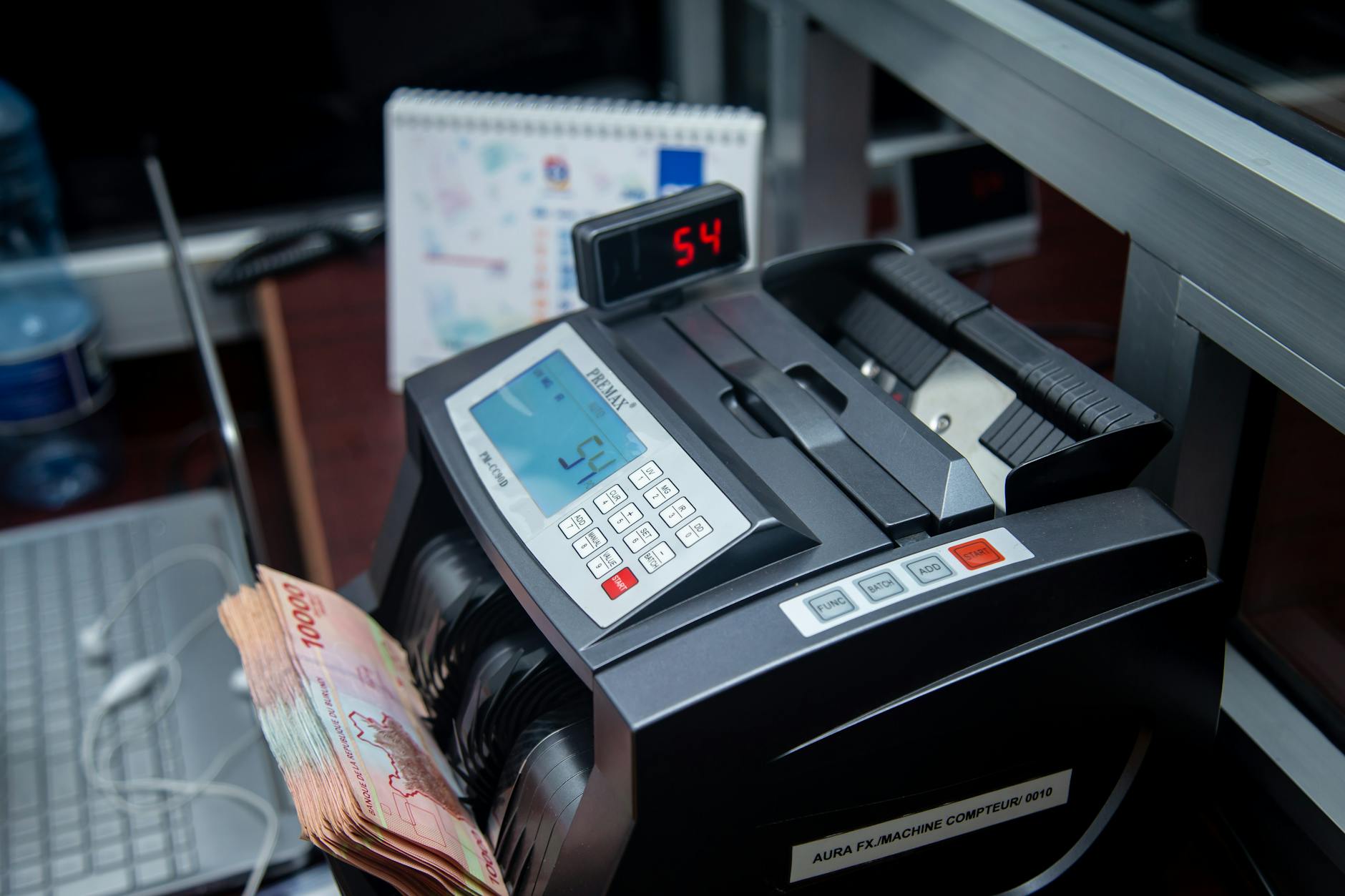Manual vs. Automated Chargeback Management: How Smart Teams Are Cutting Losses in 2025 [Guide]
Sep 02, 2025
Every hour, chargebacks quietly eat away at hard-won sales and shrink profit margins. For teams managing online payments, one surprise dispute can spark days of costly research, tedious paperwork, and slow back-and-forth with banks. If you’re still chipping away at these tasks by hand, the drain on your time and focus only grows as business scales.
Manual chargeback handling once worked fine when payments were simple and volumes low. Today, dispute counts keep climbing while margins get tighter, and manual methods just can’t keep up. Modern teams are now shifting to automated chargeback tools that flag threats early, send real-time alerts, and recover lost revenue with far less manual effort.
If you’re aiming to boost results and free up your team, now’s the moment to rethink your chargeback strategy. Platforms like ChargeBase bring proven, fully automated solutions to the front lines—cutting disputes, recovering revenue, and putting growth back in reach.
Understanding Chargebacks
When a customer spots something wrong on their bank statement, the next moment can send ripples through your business. Chargebacks are not just a refund—they can signal a breakdown in trust and bruise your revenue track record. Grasping what triggers a chargeback, and why they matter so much, helps you see why teams now look for a smarter, more automated way to defend sales and peace of mind.
What Exactly is a Chargeback?
A chargeback happens when a cardholder disputes a transaction and asks their bank to reverse it. What starts as a simple customer claim can flip a completed sale into a financial headache for a merchant. The bank looks into whether the dispute is valid and, if so, pulls the money back from your account. It’s a forced refund that doesn’t stop at lost goods—fees, penalties, and extra paperwork soon follow.
You don’t just lose the sale, you also spend time and resources untangling the mess. If chargebacks stack up, banks may hike your fees or even freeze your merchant account. Learn more from this helpful guide on how chargebacks work in detail.
The Most Common Reasons for Chargebacks
A chargeback can crop up for many reasons. Here’s what most businesses run into:
- Fraud: The cardholder claims the purchase was unauthorized.
- Customer disputes: The buyer didn’t receive the product, or it wasn’t as described.
- Processing errors: Double billing or wrong transaction amounts can spark a claim.
- Technical problems: Glitches at checkout lead to confusion or overcharges.
- Friendly fraud: A customer who did receive what they ordered tries to get their money back anyway.
Each reason means extra work, paperwork, and sometimes lost revenue. Even honest mistakes can set off a wave of disputes you’ll need to address.
Check out a more detailed list and explanation of chargeback causes in this MasterCard resource.
The True Cost of a Chargeback
It’s easy to think of a chargeback as just a lost sale. In reality, each one is a drain with many leaks:
- Lost revenue: The sale amount is refunded, but the product is often gone for good.
- Fees and fines: Banks charge for every dispute, whether you win or lose.
- Operational stress: Manual reviews, paperwork, and follow-ups tie up your team.
- Merchant reputation: High dispute rates make it harder (and more expensive) to process payments.
Multiply one chargeback by dozens or hundreds, and it can quickly turn into a storm for your team. Sites with too many disputes also risk being flagged as high-risk merchants—making payment processing more expensive or even locked down.
Why Understanding Chargebacks Matters Right Now
As payment volumes grow and fraud gets more sophisticated, the risk tied to chargebacks is only increasing. Getting a handle on what triggers chargebacks, how the bank process works, and where your team spends time, reveals why sticking with old manual efforts just can’t keep up.
Solutions like ChargeBase step in right where the pain hits—catching many disputes before they become chargebacks and helping you recover lost ground without draining your day. If keeping sales and sanity matters to you, knowing the chargeback game inside and out is your first move.
For a start-to-finish explanation of what happens during a dispute, see this complete guide to the chargeback process.
Manual Chargeback Management: How It Works
Manual chargeback management can feel like walking uphill while carrying bricks. Each case demands careful attention, stacks of paperwork, and a back-and-forth trail that drags your team down. While this was once considered “just part of the job,” business owners and finance leaders now see the cracks forming. Costs rise with every touchpoint, and errors become hard to avoid when each dispute lands on your desk.

Photo by RDNE Stock project
Chargeback teams work case by case, collecting evidence, contacting banks, filling out forms, and watching clocks as deadlines approach. Time moves quickly, yet results stay sluggish. The cost of doing it all by hand is steep, often hidden, and draining on the company’s pulse.
Key Challenges of Manual Processes
Manual chargeback handling creates problems that can damage your bottom line and morale. Let’s examine the real costs and impacts of these manual steps.
1. Time Lost Per Case
Every manual dispute pulls valuable hours off the clock:
- Chasing documentation (invoices, receipts, emails).
- Gathering evidence from different systems.
- Entering and checking data by hand.
- Communicating with banks, card networks, and sometimes customers.
What does this mean for your team? Instead of growing your business or serving customers, you’re tied up with tedious tasks. For a real-world sense of this drain, see these insights on the hidden costs of manual chargeback management.
2. Mistakes Happen—And They’re Costly
Manual methods are ripe for human error:
- Missed deadlines because a case slips through.
- Wrong forms submitted or data entered.
- Incomplete evidence weakens your case.
One small slip can turn a winnable case into a flat loss, and the impact compounds as volumes rise.
3. Team Fatigue and Burnout
Workers grinding through disputes by hand quickly lose motivation:
- Repetition wears on even the strongest employees.
- Rising case loads mean late nights and high stress.
- Burnout leads to higher turnover, more training, and lost knowledge.
Over time, experienced team members move on, leaving gaps that sap team momentum.
4. Missed Opportunities
Every hour spent on chargebacks is an hour stolen from smarter, revenue-driving work. When manual processes consume your best people:
- Genuine customer problems linger.
- Upsell and cross-sell chances are missed.
- Growth-focused projects get pushed aside.
5. Low Win Rates and Rising Losses
Manual efforts rarely keep up with fraudsters—or with evolving card network rules. The result?
- Success rates stagnate or fall.
- Costs balloon as lost cases pile up.
- Businesses eat more fees and penalties while watching revenue slip away. Chargeback fee breakdowns show just how quickly losses can mount.
6. Always Feeling Behind
Dispute queues fill faster than they empty. New cases stack on top of old ones, and your team feels the pressure:
- Audits and compliance get put on the back burner.
- The risk of missing important deadlines goes up.
- Teams feel like they’re swimming against the tide, never catching up.
Manual chargeback management can feel like fixing leaks with duct tape instead of using the right tools. Over time, the cracks widen and risks multiply. Many business leaders realize this storm doesn’t fade by itself, which is when the move to automation—like the solutions ChargeBase offers—begins to look much more appealing.
For more on the common obstacles and business impacts of manual dispute handling, check out this guide to dispute management challenges.
Automating Chargebacks: What Modern Software Delivers
As online sales grow and fraud threats shift, businesses can no longer afford to lose time or money on chargebacks. Manual processes often drag teams down, chewing through workdays and profit. Automated chargeback management brings clarity, speed, and a sense of control as operations scale. Let’s look at how switching to automation powers business growth and transforms day-to-day chargeback response.
Main Benefits of Switching to Automation
Automated chargeback software changes everything from the first alert to final resolution. The wins go far beyond saving time:
- Faster Dispute Response: Automation drastically reduces case handling time, shrinking days of paperwork to minutes. This speed limits revenue loss and meets crucial card network deadlines with ease.
- Higher Recovery Rates: Modern systems build compelling evidence packages, tracking rules from Visa, Mastercard, and others. Consistent, rule-based responses boost your win rate and the amount of revenue recovered.
- Fewer Manual Hours: Teams reclaim hours once wasted on repetitive work. Staff can focus on growth and strategy, not just keeping up.
- Lowered Hidden Costs: Automation cuts down on errors, missed deadlines, and compliance risks. Direct costs drop, employee burnout shrinks, and you dodge extra bank fees tied to frequent disputes.
- Early-Warning Alerts: Advanced integrations spot potential chargebacks before they land. For example, ChargeBase uses direct connections to payment networks to send real-time alerts, giving you a shot to issue refunds and stop disputes at the source.
- Full Audit Trails: Every step in the chargeback process gets automatically documented. If you’re ever audited or need to challenge a ruling, records are clean and complete.
- Consistency You Can Count On: Software eliminates guesswork and human error. Every case is handled to current standards, keeping results strong even as team members change.
- Ready to Scale: As your business grows, automation manages more disputes without slowing down. You’re ready for the busiest months and boldest expansion plans.
For a thorough overview of the benefits of automated chargeback management, see this detailed explainer. You can also read about the operational wins in Stripe’s guide to chargeback management software.
Case Example: ChargeBase in Action
Imagine an established SaaS company, Acme Cloud, with growth on track but chargebacks quietly draining revenue every month. Before ChargeBase, their finance team handled disputes by hand. It took hours to pull records from Stripe, prep evidence, and reply to each bank case.
Setup with ChargeBase was simple:
- Integrated directly with their payment provider.
- Activated Mastercard and Visa alerts.
- Set notification preferences for early warning signals.
Within weeks of going live, things changed:
- Early Warnings: The first alerts arrived within minutes of a customer’s cardholder claim. The team had a chance to refund or resolve before the bank even opened a formal dispute.
- Automated Responses: Instead of spending 2-3 hours per dispute, ChargeBase gathered order data, payment receipts, and communication logs into smart templates ready for submission.
- Results: After three months, win rates jumped from 23% to 65%. Chargeback volume plunged by 70%. Most notably, the finance team freed up 20 work hours per month, which they redirected toward improving customer retention.
Revenue Impact: Those recovered sales—plus money saved on bank fees—added up fast. Within two quarters, Acme Cloud had recouped tens of thousands in lost revenue, more than covering ChargeBase’s performance-based costs.
Acme Cloud’s story mirrors others found in the Chargeflow SaaS chargeback case studies and real-world examples from Kount, where efficient automation brings results that no manual process can match.
Automation isn’t just a tool—it’s a growth driver and a safety net rolled into one. As businesses start to see what modern systems can deliver, they rarely look back.
Manual vs. Automated Chargeback Management: Side-by-Side
Manual and automated chargeback management look very different in day-to-day operations. Manual methods might feel familiar, but their limits show up quickly when cases climb and time gets short. Automation flips the script, shifting hard, tedious tasks to software that knows the rules and never gets tired. Let’s look at the real differences side-by-side—so you can decide what fits your team today and where you should plan to move as you grow.

Photo by Bia Limova
Comparing Costs, Time, and Outcomes
When weighing manual against automated chargeback management, the stakes come down to more than just dollars spent. Think about how many hours your team has available, the outcome of each dispute, and what bigger impact each lost or won case has on your bottom line.
Manual management often fits small businesses or startups with only a handful of disputes each month and plenty of in-house bandwidth. But as soon as transaction volumes spike, cracks show fast. Employee burnout and expensive errors start eroding profit.
Automated solutions like ChargeBase are built for growing e-commerce, SaaS, or any business with dozens to hundreds of disputes. They scale instantly, letting you handle “busy season” or rapid expansion without missing a beat. Automation also adds deep reporting and compliance features, crucial for larger teams under pressure to meet targets and pass audits.
If you need more insight into the differences, this resource walks through the nuts and bolts of automated vs. manual chargeback management with practical examples. For an in-depth look at costs and savings, check out industry research on the hidden costs of manual chargeback management.
The most nimble businesses don’t just keep up—they get ahead by giving their teams modern, reliable tools. As case numbers rise, ChargeBase enables you to recover more revenue, reduce dispute stress, and build in room for growth, all while keeping total costs lower than manual teams can match.
Getting Ready for Automation: Steps for Success
Automation promises smoother operations and a major drop in chargeback stress. But transforming how your team handles chargebacks isn’t just about flipping a switch. Preparation sets the stage for real results. Taking a structured approach helps you avoid common pitfalls while making sure every investment pays off. Let’s walk through the steps that keep your switch to automation on track and maximize the payoff for your business.

Photo by MART PRODUCTION
Assess Your Current Chargeback Process
Start by mapping your manual process, from first alert to final response. Take note of:
- Where your team spends the most hours.
- Which steps cause the most confusion or delay.
- Points in the workflow where errors or dropped cases happen.
This assessment reveals “leaky spots” that need urgent attention and shows where automation can drive the quickest wins. It also helps you compare before-and-after outcomes, building a strong case for investing in platforms like ChargeBase.
Identify Clear Automation Goals
Purpose drives success. Decide what you need automation to accomplish:
- Reduce resolution time for each dispute.
- Raise your win (recovery) rate.
- Cut manual work for your team.
- Improve reporting for audits or compliance.
Set goals you can measure. Make sure everyone knows what a “win” looks like, so you can spot improvements quickly.
Find a Trusted Automation Partner
Choosing the right partner matters. Look for solutions with:
- Direct integration with your payment provider.
- Real-time alerts and robust reporting.
- Proven results and strong client reviews.
ChargeBase, for example, offers a performance-based pricing model and connects with major networks like Mastercard and Visa, fitting right in with how you already work.
You can explore best practices for evaluating automation solutions in the Process Automation: 7 Steps to Boost Efficiency (2025) guide.
Prepare Your Data and Team
Clean data keeps automation on target. Confirm your records for sales, refunds, and customer info are current. Train your team on how the new system works and explain how the change removes tedious work. Address any worries so everyone feels ready to use the new tools with confidence.
Test, Review, and Iterate
Launch automation in phases. Run it side-by-side with your manual system for a short period:
- Monitor case outcomes and team feedback.
- Improve integrations or workflow steps based on real-world use.
- Gradually shift more disputes to full automation as trust grows.
Frequent reviews spot issues early and keep your goals in focus. The best teams treat automation as a “living” system and keep tuning it for maximum results. For more steps on planning successful chargeback automation, this overview on Automating Chargeback Management: First Steps & Best Practices is a solid resource.
Measure and Celebrate Early Wins
Track your key metrics from the start:
- Time saved per dispute
- Increase in recovered funds
- Reduction of manual hours
- Rate of successful dispute resolutions
Share progress across the team and highlight quicker, easier wins. Early momentum builds support, turning automation from a “nice-to-have” into your most valued business tool.
Switching to an automated solution like ChargeBase isn’t just about technology. It’s about making your business leaner, faster, and more focused on growth. With careful prep and the right partner, you’ll wonder why you ever handled disputes by hand.
FAQs on Automated Chargeback Management
Automating chargeback management unlocks time, clarity, and new revenue protection that busy teams crave. You might have questions about how these tools fit into your business, what impact they’ll have, and why a switch makes sense right now. Let’s tackle the questions companies ask most as they weigh moving from manual to automated chargeback platforms like ChargeBase.

Photo by Audy of Course
How do automated chargeback solutions connect with payment providers?
Connecting with payment providers is the beating heart of automation. Automated platforms like ChargeBase use secure APIs to sync directly with payment gateways—think Stripe, PayPal, or Shopify Payments. This means real-time transaction pulls, instant alerts when a dispute is filed, and direct evidence transfer for each case.
Key benefits of direct integrations:
- No manual uploading or data entry.
- Payment and customer info is always up to date.
- Early-warning chargeback alerts from networks (like Ethoca for Mastercard and RDR for Visa) work instantly.
These integrations are set up once and require little ongoing effort from your team. As soon as a chargeback threat appears, your software reacts and responds. For a deeper look at how integration bridges automation with payment systems, see this overview of automated chargeback management.
Do tools like ChargeBase prevent chargebacks or only handle disputes?
Modern automation software now offers both prevention and recovery. ChargeBase, for example, isn’t just about fighting back after you get hit—it’s more like a high-tech alarm system that spots threats before they turn into real losses.
Major functions include:
- Prevention: Tools detect suspicious activity and offer real-time alerts so you can refund questionable charges, stopping many disputes from ever becoming chargebacks.
- Dispute Handling: When a chargeback does occur, the software assembles and submits evidence instantly, using the correct format for each payment network.
A key takeaway: Effective automation does more than just put out fires; it helps stop them from starting. Learn more about the mix of prevention and dispute management in this resource on chargeback defense.
How is pricing structured for chargeback management software?
Chargeback software uses clear, predictable pricing models that align with your results. ChargeBase offers a performance-based approach—charging a small, flat fee only when an alert or case is processed. There’s no long-term contract trapping you if it’s not working, and pricing always matches value delivered.
Typical models you’ll see:
- Per alert: Fixed price per network alert (such as Ethoca or RDR).
- Success-based: Fee only if revenue is recovered or a chargeback is resolved.
- Monthly plans: Some systems charge a flat monthly platform fee if you process large volumes.
Want a real-world example of the numbers? Visit the Chargeflow chargeback pricing page for details on how pricing works with ROI built in.
How does automation affect team roles and processes?
Switching to automated chargeback tools lifts heavy, routine work from your team’s plate almost overnight. Instead of scrambling to find receipts or prepare submissions, staff can focus on customer care and what drives growth. Rote tasks fade, while more rewarding strategic tasks take center stage.
Changes teams notice:
- Admins spend less time on disputes and more on business-building projects.
- Case tracking, reporting, and evidence gathering become hands-off.
- Workflows are easier to document, audit, and tune as the business grows.
Automation won’t make your team obsolete; it powers them up to do their best work.
Is merchant and customer data secure with chargeback software?
Security is built into the DNA of reputable chargeback management platforms. Top providers use encryption, industry-standard access controls, and regular compliance checks to keep data safe. They align with the same rules used by global payment providers, including PCI DSS.
Protective steps include:
- All customer info encrypted in transit and at rest.
- Role-based user permissions limit who can see or download sensitive information.
- Detailed activity logs track every access point.
For practical tips and a deeper technical breakdown, see this merchant’s guide to chargeback software security.
How soon can results be expected after switching to automation?
Most companies see clear results within weeks of moving to automation. Immediate improvements include:
- Noticeable drop in time spent per dispute (often hours saved each day).
- More chargebacks prevented due to early alerts.
- Higher dispute win rates showing up in your reporting dashboard after the first billing cycle.
Many ChargeBase clients highlight jumps in recovered revenue and falloff in dispute losses during the very first month.
Are there industry standards or certifications for chargeback management platforms?
Yes, leading chargeback software partners adhere to meaningful certifications. The most common is PCI DSS (Payment Card Industry Data Security Standard), which brings strict data handling and storage requirements. Some tools also comply with SOC 2 Type II for broader platform security.
Why certifications matter:
- They show the provider takes security and reliability seriously.
- They give you proof to bring to auditors, banks, or partners.
When choosing a platform, ask for proof of compliance and check for independent, third-party audits. It’s a clear sign you’re choosing a serious partner and not rolling the dice on a critical business process.
Can dispute win rates be tracked before and after moving to automated management?
Automated systems make win-rate tracking straightforward and reliable. Hello, easy dashboards and custom reports. You can compare how many disputes you won (or lost) before automation with what you achieve after, all broken down by provider, reason code, or time period.
Tracking improvements:
- Visual reports on dispute volume, outcome, and financial recovery.
- At-a-glance metrics to help measure the ROI of switching.
- Exportable data for executive review or audits.
ChargeBase, for example, gives you a side-by-side record of win rates, so you see just how much manual work was holding results back.
For guidance on maximizing data insights with automation, this merchant’s guide to chargeback analytics is a helpful reference.
Ready for clarity, faster results, and less stress on your team? Automation answers what manual never could—turning chargebacks from costly distractions into a manageable, trackable, and even winnable part of doing business.
Conclusion
Sticking with manual chargeback processes holds businesses back, eating up hours, pushing teams to the edge, and leaving potential revenue on the table. Automated chargeback management with ChargeBase breaks this costly cycle—transforming slow, error-prone tasks into a streamlined system that spots threats early and turns disputes into wins.
Automation means faster recovery, fewer disputes, and proven cost savings. Your team gains time for the work that drives growth. Now is the moment to review your setup with a critical eye and ask if you’re losing money to manual steps that modern tools could fix.
Stop letting chargebacks drain your margins and limit your business. Let ChargeBase take charge of disputes, switch stress for strategy, and help you turn every resolved case into momentum for what you want to build next. Thank you for reading—and if you’re ready, see how ChargeBase can help you claim back what’s yours.
You might also want to read
Chargeback Software Tools & Solutions
Sep 04, 2025
Chargeback Software Tools & Solutions
Sep 03, 2025
Chargeback Management & Software Overview
Sep 03, 2025
Chargeback Management & Software Overview
Sep 02, 2025